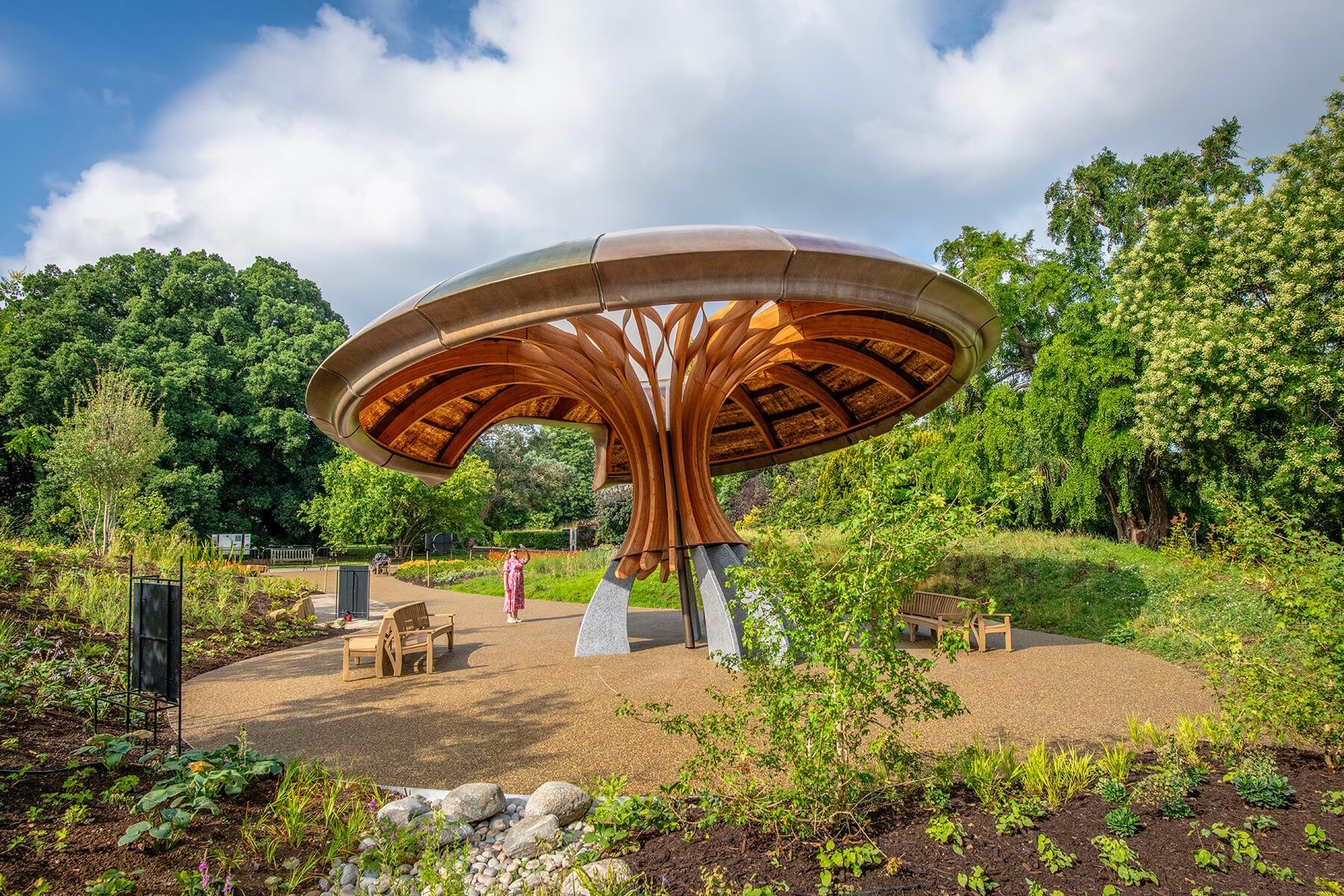Few organizations feel more devoted to sustainability efforts than botanic gardens. Even still, as Earth’s natural systems continue to diminish, many organizations are recognizing a need to evolve from maintaining climate awareness to more concentrated efforts to promote and encourage climate advocacy. A new attraction at Kew Gardens in London, the Carbon Garden, does just that—emphasizing the critical role of carbon in sustaining life on earth through its design.
Kew Gardens was first established in 1759, as a private 9-acre botanic garden. Today, the approximately 300-acre Royal Botanic Gardens, Kew, as it is formally known, is listed as a UNESCO World Heritage Site. The Carbon Garden is among multiple initiatives—like this net-zero renovation plan for the site’s historic glasshouses —ushered in since Kew launched a forward-thinking, 10-year sustainability strategy in 2021.
The Carbon Garden showcases the essential role plants and fungi play in reinforcing our ecosystems, addressing climate change by testing climate-resilient plants and water conservation methods, serving as somewhat of a pilot study for the U.K.’s shifting climate. Panels situated throughout the garden provide information that allows visitors to learn more about the carbon cycle while observing it in real time. Enveloped in the shade of the dome-shaped pavilion canopy, educators can share insights and lead discussions during visits and school trips.
“The Carbon Garden offers a unique opportunity to showcase our ongoing research, combining scientific insight with thoughtful design and beautiful planting to highlight the role of carbon in our lives, how it moves through the environment and how plants and fungi can help us tackle climate change,” Richard Wilford, designer of the Carbon Garden and manager of garden design at RBG Kew, shared in a press release.
At the center of the garden is a pavilion designed by Mizzi Studio, an interdisciplinary studio based in London and Valletta, Malta. The organic structure creates a venue for immersive learning, calling back to the greater programming of the garden. The fungoid structure features a curvilinear base, expanding at the base before contracting and fanning out at the top. Its design draws on the symbiotic relationship between plants and fungi, relating back to the species capacity for carbon capture.
Aiding Kew’s commitment of being “Climate Positive by 2030,” the garden underscores the importance of education along with direct responses. By highlighting everyday choices visitors can make to support the planet’s health, the garden hopes to encourage collective action.
According to the press release, the Carbon Garden is one of Kew’s “most ambitious garden projects in recent years,” featuring 35 new trees and 6500 plants. Along with the known benefits trees provide through the absorption of carbon dioxide, improvement of air quality, and shade and shelter, the garden also illustrates ways that other plants can reduce flooding, prevent soil erosion, and store carbon.
“The pavilion is a symbolic fruiting body and an extension of the Carbon Garden’s planting scheme, celebrating the symbiotic relationship between plants and fungi,.” shared studio director Jonathan Mizzi in a statement. “Born from the belief that our future must be grown from renewable natural materials, it is shaped by the beauty and intelligence of nature, grounded in science. I hope it stands as a living expression of Kew’s mission to imagine and build a more harmonious world.

Mizzi Studio opted for low-carbon stone foundations and a natural fiber composite for the pavilion’s sloping canopy. It’s able to capture rainwater, thus feeding the surrounding rain garden—an expanse of grasslands, wildflower meadows, and native hedgerows. This vegetation was chosen for its ability to lock in carbon as they increase biodiversity.
The Carbon Garden opened to the public in late July, and is now on permanent display at Kew. Visitors with a ticket to Kew Gardens can enter the new site at no extra cost.
→ Continue reading at The Architect's Newspaper
